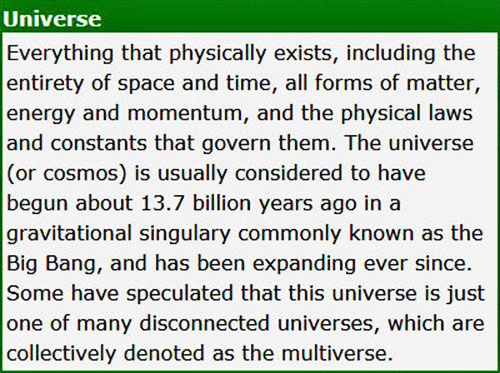|
from PhysicsOfTheUniverse Website
This is in direct contravention of the "principle of locality" (or what Einstein called the "principle of local action"), the idea that distant objects cannot have direct influence on one another, and that an object is directly influenced only by its immediate surroundings, an idea on which almost all of physics is predicated.
In fact, Einstein was so upset by the conclusions on nonlocality at one point that he declared that the whole of quantum theory must be wrong, and he never accepted the idea of nonlocality up till his dying day.
The two concepts of
nonlocality and entanglement go very much hand in hand, and,
peculiar though they may be, they are facts of quantum systems which
have been repeatedly demonstrated in laboratory experiments.
complementary properties when measured
However, under quantum theory, a superposition is also possible, so that the two electrons can be considered to simultaneously have spins of clockwise-anticlockwise and anticlockwise-clockwise respectively.
If the pair are then
separated by any distance (without observing and thereby
decohering them) and then later checked, the second particle can
be seen to instantaneously take the opposite spin to the first, so
that the pair maintains its zero total spin, no matter how far apart
they may be, and in total violation of the speed of light law.
Bell's Theorem, published in 1964, and referred to by some as one of the most profound discoveries in all of physics, effectively showed that the results predicted by quantum mechanics (for example, in an experiment like that described by Einstein, Podolsky and Rosen) could not be explained by any theory which preserved locality.
The subsequent practical
experiments by John Clauser and Stuart Freedman in
1972 seem (despite Clauser's initial espousal of Einstein's
position) to definitively show that the effects of nonlocality are
real, and that "spooky actions at a distance" are indeed possible.
Due to the effects of the uncertainty principle, the mere act of observing the properties of particles at a quantum level (spin, charge, etc), disturbs the quantum system irrevocably, and this would appear to prevent us from using this system as a means of instantaneous communication.
However,
Anton
Zeilinger's work at two observatories in the Canary Islands has
shown promising indications that entangled particles can indeed be
reconstituted in a different place, although the leap from this to a
teleportation device of the kind envisaged in
Star Trek is a
profound one...
|





